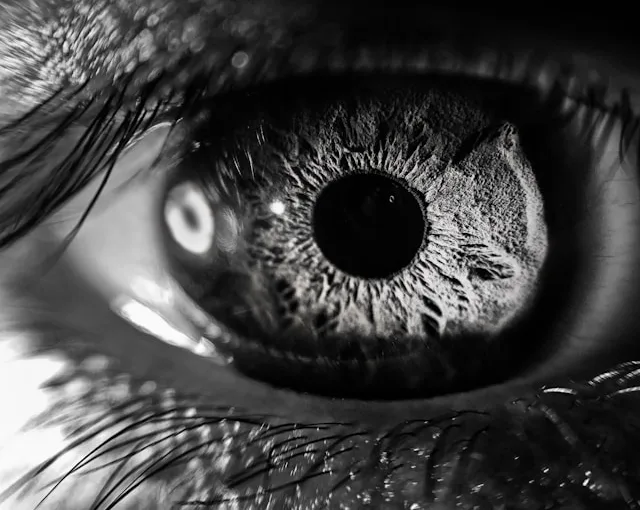Cecil Farley’s artificial cornea implant marks a groundbreaking advancement in eye care, potentially becoming a standard treatment for vision restoration
A 91-year-old man has become the first patient in England to have his sight saved by an artificial layer in his cornea. Cecil Farley, from Chobham, Surrey, experienced vision problems in his right eye for 15 years before eventually losing sight. After his previous human cornea graft failed, he faced a year-long wait for a donor cornea. However, an innovative NHS procedure allowed him to receive an artificial cornea implant, bypassing the lengthy queue.
Farley praised the procedure for allowing him to still see his wife, Elizabeth, after 63 years of marriage. He expressed immense relief at being able to carry on with life normally and highlighted how critical good vision is for a fulfilling life. For now, he is content with simple activities, but he hopes to tackle more intricate tasks, like repairing a watch, in the future.
Embed from Getty ImagesThe artificial implant, known as EndoArt, was developed by EyeYon Medical. It is the first of its kind to replace the inner lining of the cornea, a crucial part that regulates the hydration of the cornea. Damage to this lining can lead to blurred vision and other complications. EndoArt resembles a contact lens and is designed to stick to the back of the cornea. It is inserted into the eye, manoeuvred into position with an air bubble, and secured with a single stitch.
Farley underwent the operation, known as an endothelial keratoplasty, in February at Frimley Park Hospital in Surrey. This surgery made him one of only 200 recipients of the artificial implant worldwide. Thomas Poole, a consultant ophthalmologist at Frimley Health NHS Foundation Trust, performed the operation alongside his colleague Hanbin Lee. Poole reported successful outcomes in all four patients who received the artificial cornea in the last two months, noting significant improvements in their vision.
The implant costs approximately £1,800, comparable to the expense of using a human cornea. Poole believes that in the next 10 to 20 years, artificial corneas could become the norm for certain types of corneal graft patients. He described Farley as a “technically difficult first patient,” but expressed amazement at the implant’s success once it began working.
Prof Sir Stephen Powis, the NHS England national medical director, hailed the use of artificial cornea transplants as a groundbreaking step forward in eye care. He emphasized the potential benefits for many patients needing vision restoration and noted that this could provide an additional option for those awaiting donor transplants.
NHS Blood and Transplant (NHSBT) states that to meet all surgical and research needs, they require a weekly stock of 350 eyes. However, they received an average of only 88 donations per week between April 2021 and March 2022. The NHSBT transplant activity report for 2020-21 indicated that as of March 31, 2021, 10% of individuals on the organ donation register had opted not to donate their corneas. Kyle Bennett, an assistant director for tissue and eye services at NHS Blood and Transplant, suggested that this could be due to the emotional significance people attribute to their eyes.
The success of Farley’s artificial cornea implant highlights a promising advancement in medical technology. This innovation not only offers hope to patients but also signifies a potential shift in how the NHS approaches corneal transplants in the future.
Analysis
The successful implementation of an artificial cornea in Cecil Farley represents a significant milestone in ophthalmology. This breakthrough could revolutionize the standard treatment for corneal diseases and injuries. The development of the EndoArt device by EyeYon Medical showcases the potential for medical technology to address organ shortages and improve patient outcomes.
From a medical perspective, the artificial cornea offers a reliable alternative to human donor tissue, which is often in short supply. The ability to produce and implant a synthetic cornea reduces the dependency on human donations and can expedite treatment for patients suffering from corneal damage. This technological advancement aligns with broader trends in regenerative medicine, where synthetic and bioengineered tissues are increasingly used to replace or repair damaged organs.
Economically, the artificial cornea implant is cost-effective, priced similarly to human cornea transplants. This affordability could ease the financial burden on healthcare systems and patients alike. Furthermore, the standardization of artificial corneas could streamline surgical procedures, reduce waiting times, and enhance overall efficiency within the NHS.
Sociologically, this development has profound implications for the quality of life for elderly patients like Farley. Restoring vision in older adults can significantly improve their independence and well-being, reducing the need for long-term care and support. Additionally, the emotional impact of regaining sight, especially for those who have been visually impaired for extended periods, cannot be overstated. It allows individuals to re-engage with their surroundings and maintain meaningful connections with loved ones.
Politically, the success of this procedure underscores the importance of funding and supporting innovative medical research. Government policies that prioritize healthcare innovation can lead to breakthroughs that dramatically improve patient care. This case highlights the need for continued investment in medical technology and the benefits of fostering collaborations between the public health sector and private companies.
In terms of ethical considerations, the artificial cornea addresses the issue of organ donation consent. The emotional and symbolic significance of the eyes means that some individuals are reluctant to donate their corneas. The availability of artificial alternatives provides an ethically sound option that respects individual preferences while meeting medical needs.
Overall, the artificial cornea implant signifies a transformative advancement in medical science, with far-reaching implications across various domains. It promises to enhance the lives of countless individuals, streamline healthcare processes, and reduce dependency on donor tissues, marking a new era in vision restoration.
